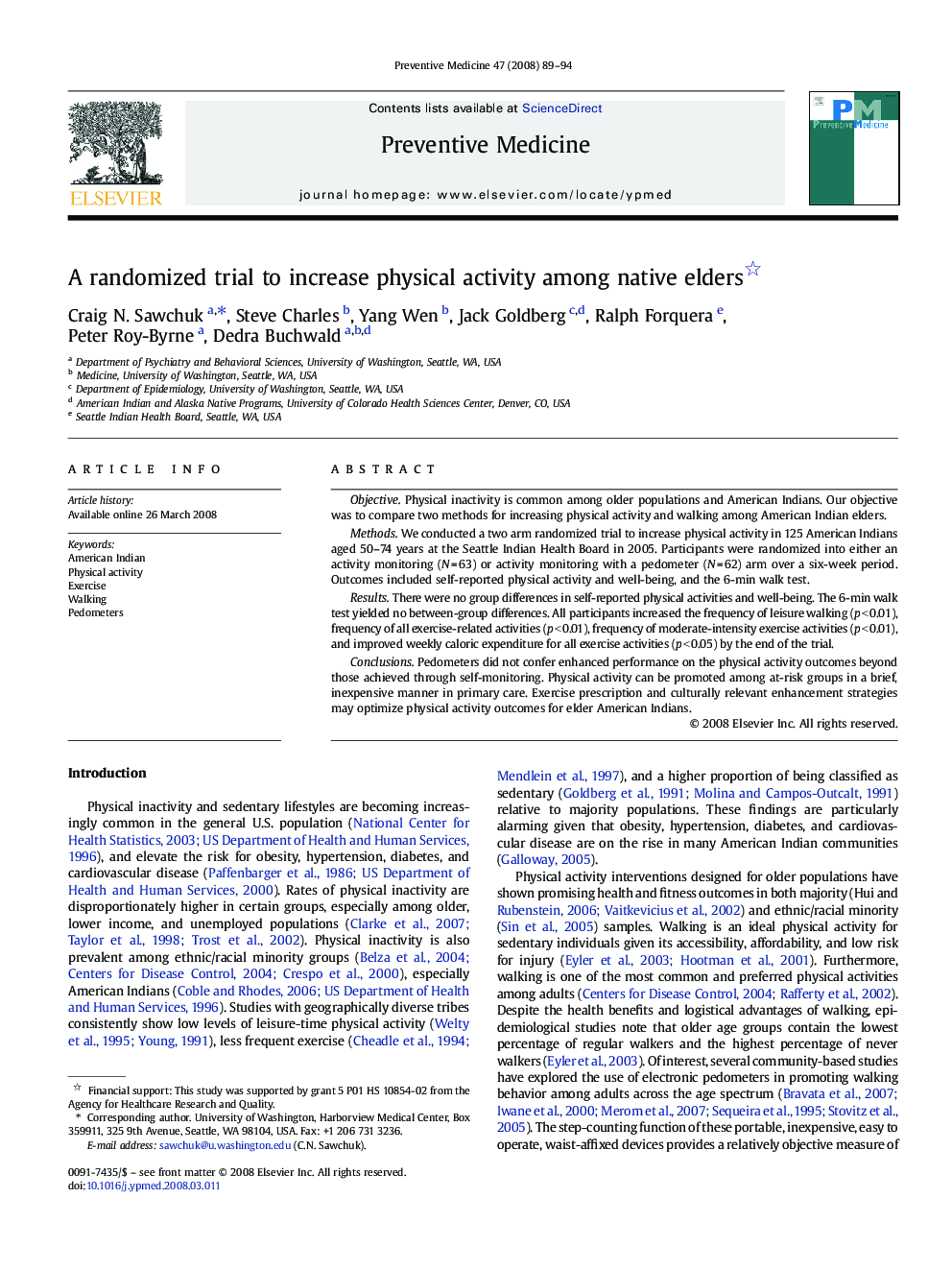| Article ID | Journal | Published Year | Pages | File Type |
|---|---|---|---|---|
| 3101755 | Preventive Medicine | 2008 | 6 Pages |
ObjectivePhysical inactivity is common among older populations and American Indians. Our objective was to compare two methods for increasing physical activity and walking among American Indian elders.MethodsWe conducted a two arm randomized trial to increase physical activity in 125 American Indians aged 50–74 years at the Seattle Indian Health Board in 2005. Participants were randomized into either an activity monitoring (N = 63) or activity monitoring with a pedometer (N = 62) arm over a six-week period. Outcomes included self-reported physical activity and well-being, and the 6-min walk test.ResultsThere were no group differences in self-reported physical activities and well-being. The 6-min walk test yielded no between-group differences. All participants increased the frequency of leisure walking (p < 0.01), frequency of all exercise-related activities (p < 0.01), frequency of moderate-intensity exercise activities (p < 0.01), and improved weekly caloric expenditure for all exercise activities (p < 0.05) by the end of the trial.ConclusionsPedometers did not confer enhanced performance on the physical activity outcomes beyond those achieved through self-monitoring. Physical activity can be promoted among at-risk groups in a brief, inexpensive manner in primary care. Exercise prescription and culturally relevant enhancement strategies may optimize physical activity outcomes for elder American Indians.
